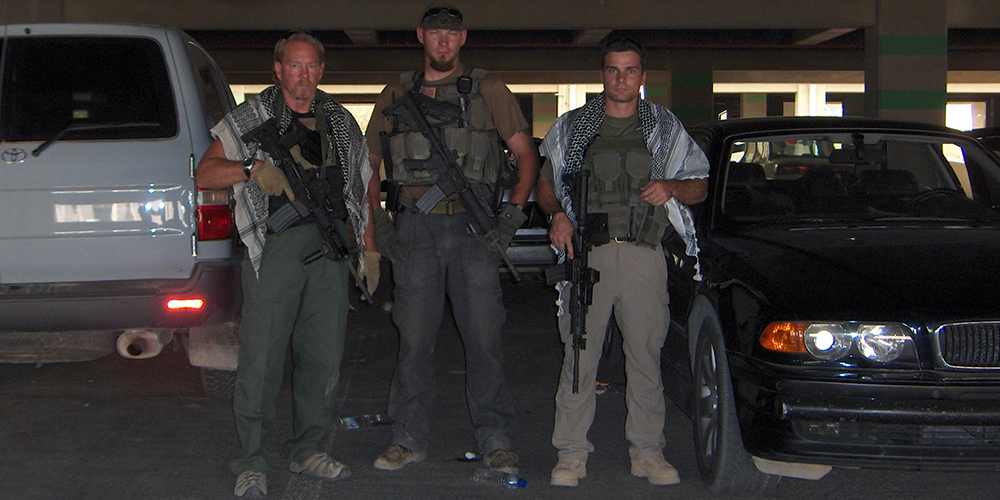Route Irish
Route Irish, a name given to the most infamous US Main Supply Route (MSR) in Iraq, was the 7.5 mile (12km) stretch of Highway that linked the US controlled green zone, a fortress of military and diplomatic quarters, to the Baghdad International Airport (BIAP. For all of 2004 and most of 2005, Routh Irish was littered with heavy military traffic, diplomatic motorcades and other miscellaneous convoys carrying people and equipment. This chum-like wave of predictable soft targets lured in every type of insurgent including local militia, Al Qaeda and other foreign fighters looking for easy trophy kills. It was the perfect stretch of road to practice various tactics on westerners with minimal risk of retaliation. Attacks typically consisted of drive-by shootings, roof-top ambushes, attacks from overpasses and remotely detonated IEDs hidden in roadside garbage, donkey cars, old cars, potholes and any other item that would conceal enough explosives to do some damage. It was like shooting fish in a barrel. In 2004, no security upgrades, check points or additional US Army patrols had been put into place yet, so Route Irish made for one of the easiest, risk-free attack scenarios for insurgent combatants in the world.
In 2004 Cupid was working for Triple Canopy and assigned to command the Personal Security Detail (PSD) that was responsible for moving US State Department personnel and other Triple Canopy assets and personnel between the Green Zone and BIAP. Due to a combination of very specific low profile tactics and detailed planning, Cupids team had more successful runs on Route Irish than any other organization at the time. Unfortunately, this streak would eventually end in 2005 when Cupid’s team was ambushed in a drive-by shooting that finished with three members of his team shot; two by insurgents and one in a horrific Blue on Blue. This was an attack that Cupid was sure could have been prevented, which led to the start of his early research into tactical and strategic decision making as it related to the tactical landscape. This eventually led Cupid to the teachings and research of Kahneman, Gladwell, boyd, and other experts in the field of decision making, situational awareness and the human mind. Back in 2004, the team would travel on Route Irish up to six times per day. The early success was attributed to the profile of the motorcade, but more importantly, the mindset and buy in of all of the team members using the tactic.
Using a low profile tactic is not easy to execute effectively as you are not completely covert and you are also not using an overt show of force as a deterrent either. Cupid used armoured BMW 740i sedans that blended well with the thousands of other locally driven luxury sedans in Baghdad, but the team still looked very “western” with on member sporting the call sign “powder” after the pasty, white, spoon bending character from the 1995 movie of the same name. Each team member also wore full body armour with enough ammunition to withstand sustained attacks if the team debussed. To keep the motorcade profile low, each vehicle had tinted windows, drove at over 160km/h and with enough distance between each vehicle to ensure they would not be mistaken for a motorcade. The spacing of our vehicles was based on Cupid’s 5 second rule. The rules was based on the understanding that if an ambush occurred on another vehicle in the motorcade, it would take at least 5 seconds to make a plan by gathering as much information as possible, developing some options, choosing the best option and then executing. When travelling around 160km per hour, spacing out our vehicles 100 to 160 meters would allow that 5 second planning process to take place before we hit the “X” which is what the center of the ambush was often called.


